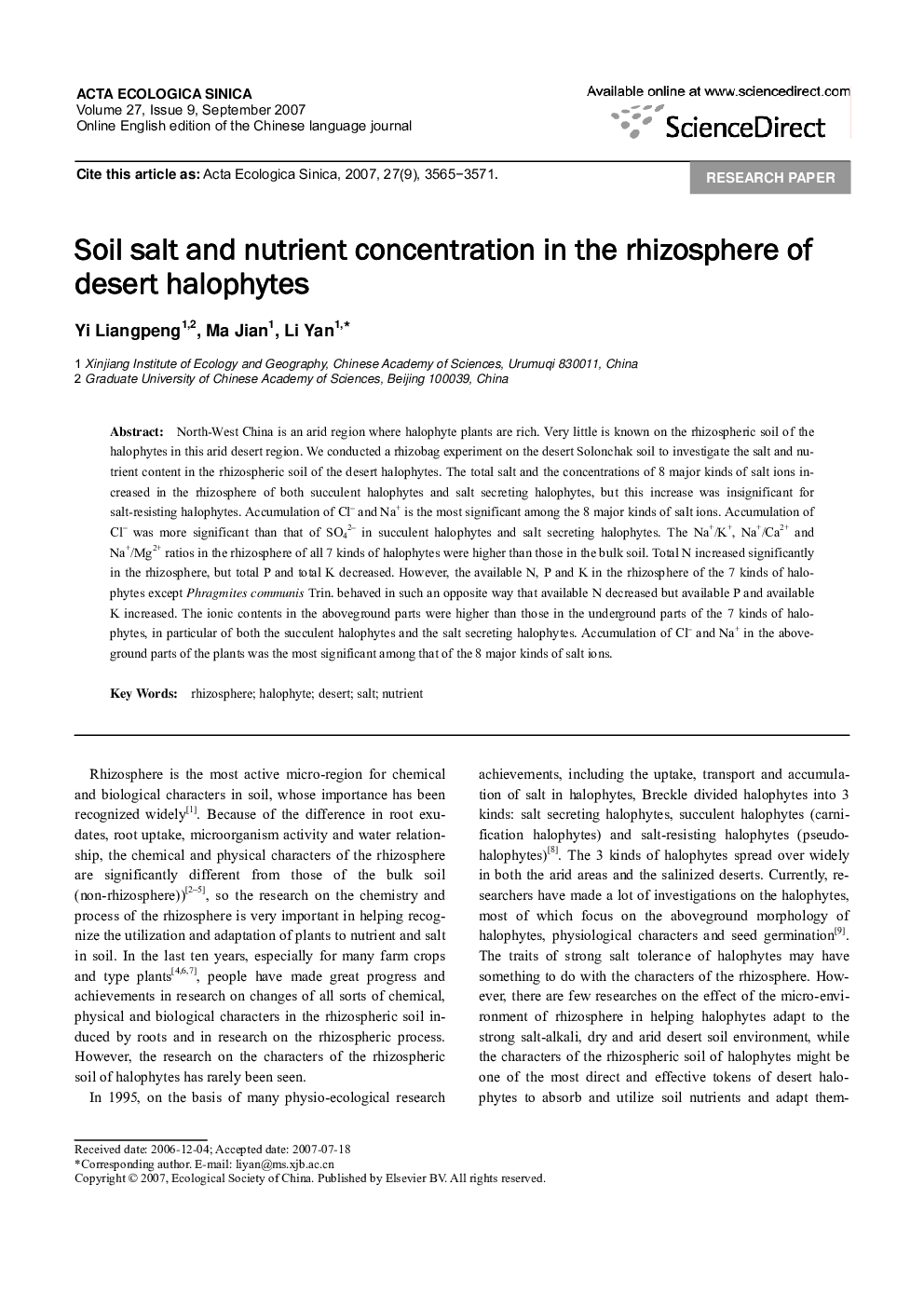| Article ID | Journal | Published Year | Pages | File Type |
|---|---|---|---|---|
| 4380390 | Acta Ecologica Sinica | 2007 | 7 Pages |
North-West China is an arid region where halophyte plants are rich. Very little is known on the rhizospheric soil of the halophytes in this arid desert region. We conducted a rhizobag experiment on the desert Solonchak soil to investigate the salt and nutrient content in the rhizospheric soil of the desert halophytes. The total salt and the concentrations of 8 major kinds of salt ions increased in the rhizosphere of both succulent halophytes and salt secreting halophytes, but this increase was insignificant for salt-resisting halophytes. Accumulation of Cl– and Na+ is the most significant among the 8 major kinds of salt ions. Accumulation of Cl– was more significant than that of SO42– in succulent halophytes and salt secreting halophytes. The Na+/K+, Na+/Ca2+ and Na+/Mg2+ ratios in the rhizosphere of all 7 kinds of halophytes were higher than those in the bulk soil. Total N increased significantly in the rhizosphere, but total P and total K decreased. However, the available N, P and K in the rhizosphere of the 7 kinds of halophytes except Phragmites communis Trin. behaved in such an opposite way that available N decreased but available P and available K increased. The ionic contents in the aboveground parts were higher than those in the underground parts of the 7 kinds of halophytes, in particular of both the succulent halophytes and the salt secreting halophytes. Accumulation of Cl– and Na+ in the aboveground parts of the plants was the most significant among that of the 8 major kinds of salt ions.
